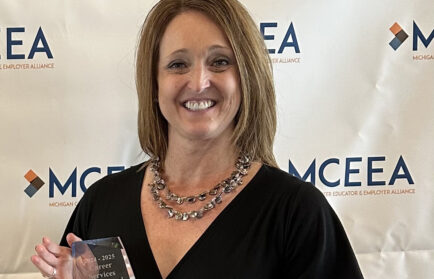Most advocates of free markets recognize that potentially, there exist some situations in which government regulation of some form is legitimate. A prime example is environmental regulation. Free markets are justified by the fact that when property rights are securely protected for everyone – and not just the wealthy or elite – then all market transactions are expected to be mutually beneficial for both parties. When the property rights of everyone – buyers and sellers, employers and employees, etc. – are equally protected, then it will tend to be true that the only way to become wealthy or profitable is to provide a valuable good and service for which someone else is willing to voluntarily pay. But third-party neighborhood effects can undermine this defense of free markets.
For example, a manufacturer who dumps toxic waste in a nearby river does not engage in a mutually-agreeable act of contract. In principle, it is possible to obtain unanimous consent to an act of waste disposal by paying sufficient compensation to all affected parties, which may even entail paying enough money for the victims’ land that the victims voluntarily move somewhere else. Economists refer to situations such as these as “externalities” or “external costs,” meaning that costs of production have been shifted onto unwilling third parties who have not been offered compensation sufficient to obtain their consent. In the absence of consent by all affected parties, there can be no guarantee that the associated economic activity will be socially productive on net. Economists therefore conclude that in the presence of third-party effects, some sort of government intervention is justified. This may take a variety of forms, such as punitive fines imposed on polluters — intended to protect the victims from a violation of their property rights — or the wholesale ban of certain substances or production processes — such as the ban on leaded gasoline.
But even the most justifiable forms of government intervention can yield undesirable or even harmful consequences. It is important to appreciate the pathologies of regulation before blindly proceeding to advocate regulation. Let us consider the U.S. federal government’s regulation of automobile fuel economy.
First enacted in 1975, the Corporate Average Fuel Economy (CAFE) standards require automakers to meet certain fleet fuel economy average standards. Over the years, these fuel economy standards have been gradually increased. At first glance, CAFE would appear to be a reasonable environmental regulation. By mandating improved fuel economy, automobiles will emit fewer pollutants, creating a cleaner environment for everyone.
But not everything is as it first appears. In fact, CAFE creates a variety of perverse, unintended consequences. First, CAFE can actually create an incentive for automobile owners to drive their cars more, not less. When a vehicle’s fuel economy is improved, it costs less per mile to drive that vehicle. From the consumer’s perspective, an increase in vehicle fuel economy is equivalent to a decrease in the price of fuel. This means that price-sensitive owners will potentially drive their fuel-efficient vehicles more than they would have driven a less fuel-efficient vehicle. This is consistent with the Jevons Paradox, named after 19th-century economist William Stanley Jevons. In 1865, Jevons observed that technological improvements in the efficiency of coal usage resulted in an increase in the consumption of coal. Suppose that a technological improvement allows the creation of twice as much energy from a given amount of coal. This means that it costs half as much to create that energy. If demand is very elastic — i.e. price-sensitive — then users could respond to the halving of cost by more than doubling their consumption. For example, when the cost of using coal is halved, a person may actually triple their coal usage. Thus, increased resource efficiency can actually be counter-productive from the perspective of environmental conservation.
In the real-world, it is unlikely that demand for gasoline is so elastic (price-sensitive) that a doubling of fuel efficiency causes a more-than-double increase in miles-driven. When gas prices double, we do not tend to see people cut their miles-driven by more than half, so conversely, if fuel efficiency doubles — cutting the effective price of gas in half — we should not expect people to more than double their miles-driven. Nevertheless, a weaker form of the Jevons Paradox, called the Rebound Effect can still occur. The Rebound Effect is when improved resource efficiency is partially canceled out by increased resource usage. For example, suppose that a doubling of fuel efficiency causes a 25% increase in vehicle miles-driven. The net effect is an environmental improvement, but the improvement is not as great as was expected or hoped. It is unlikely that CAFE is associated with a Jevons Paradox, but it is almost guaranteed that a Rebound Effect exists. This means that CAFE is unlikely to be as effective as originally intended.
But this is not the only shortcoming of CAFE. Perversely, CAFE can actually result in a decrease in overall vehicle fuel economy! This is because CAFE holds different vehicles to different standards. Legislators were well aware of the fact that a full-size pickup truck cannot possibly achieve the same fuel efficiency as a compact sedan. Therefore, CAFE holds trucks to a lower standard than passenger cars. For example, despite having the approximate dimensions of a compact car, the Chrysler PT Cruiser was classified as a light truck, so its CAFE target in the year 2000 was 20.7 mpg rather than 27.5. Furthermore, vehicles with a larger footprint (in square foot) are held to lower fuel economy standards. As a result, many automakers realized that it was easier to make their vehicles larger than it was to make them more efficient. For example, the 2017 redesign of Buick LaCrosse was made 2.7 inches longer and 1.2 wider in order to increase its footprint by 2.1 square inches to 50.1. This reduced its 2017 CAFE target from 37.7 mpg down to 36.3.
Thus, fuel economy regulations actually encourage automakers to market larger, less fuel-efficient vehicles to consumers. One explanation for the nigh-disappearance of the station wagon and its replacement by the SUV is the fact that station wagons are usually considered passenger cars, while SUVs are usually considered light trucks. Automakers themselves have expressed their disappointment with CAFE. For example, Daimler-Mercedes-Benz commented that the Obama administration’s 2011 CAFE proposal “clearly favors large SUVs and pickup trucks.” Similarly, Volkswagen said Obama’s proposal “places an unfairly high burden on passenger cars, while allowing special compliance flexibility for heavier light trucks. … The proposal encourages manufacturers and customers to shift toward larger, less efficient vehicles, defeating the goal of reduced greenhouse gas emissions.”
At this point, the reader may be asking, “Okay, granted that CAFE is not perfect, but what is the alternative?” In fact, a far superior alternative does exist, namely some form of gasoline or emissions tax. By taxing gasoline or emissions, vehicle owners are directly incentivized to not only buy more fuel-efficient vehicles, but also to drive their vehicles less. Furthermore, the incentive is to buy a smaller vehicle, not a larger vehicle — unlike CAFE, which perversely encourages consumers to drive more often and buy larger vehicles.
It is important to realize that increased fuel efficiency due to more advanced powertrain technology is only one of several possible means of reducing gasoline usage. Alternative means of achieving fuel efficiency include buying smaller vehicles with essentially unchanged powertrain technology, driving fewer miles for leisure, moving closer to work or school, and carpooling more often. A tax on emissions or gasoline would encourage all of these different means of fuel conservation. Furthermore, different means are appropriate to different people — especially when we realize that a more advanced powertrain with improved fuel efficiency is not free. Indeed, the Center for Automotive Research estimated that 2011 CAFE standards could eventually cost up to $6,700 per vehicle. For some individuals on lower incomes, carpooling may be far more cost-effective than paying thousands of dollars extra for a more fuel-efficient vehicle. For others, simply replacing a large SUV with a smaller station wagon may be preferable. Finally, individuals who absolutely require large, heavy trucks and vans may be willing to avoid the cost of a higher gas tax by paying thousands of dollars for more advanced powertrain technologies. Whereas CAFE forces everyone to pay the price for more advanced technology, a gas or emissions tax would encourage everyone to use whichever means is the least expensive for them, given their unique life circumstances and needs.
While people will understandably object to an emissions tax or an increased gasoline tax, we must realize that CAFE is itself a tax too. Except, it is a hidden tax — up to $6,700 per vehicle which consumers do not even realize they are paying. More advanced powertrains cost more money. Larger vehicles — which are held to a lower standard — cost more too. For example, the relative disappearance of the station wagon and its replacement with larger, more costly SUVs is itself a tax for anyone who might have preferred a smaller station wagon if the CAFE standards had not effectively outlawed them. And when new cars become more expensive, used cars become more expensive as well. So ultimately, everyone — including people with the lowest incomes — ends up paying the CAFE tax.
In fact, CAFE is necessarily and absolutely more expensive for the taxpayer than an ordinary tax because it imposes one specific technological solution, whereas a tax permits multiple options. With a gasoline or emissions tax, one option is to avoid the tax with a more technologically advanced powertrain — exactly what CAFE would have mandated anyway. But other options remain, such as carpooling and buying a smaller vehicle. In general, imposing a one-size-fits-all solution is more costly than letting everyone choose whichever options are least costly for them personally. Indeed, a 2004 study by the Congressional Budget Office estimated that achieving a given reduction in fuel use costs 27% less if achieved through a gasoline tax rather than CAFE. In other words, the CAFE tax is 27% more than an equally effective gas tax.
Assuming that gas or emissions tax is revenue-neutral — i.e. assuming that the revenue is used to reduce some other tax (such as the income tax) so that total government revenue is unchanged — then the gas/emissions tax itself does not directly cost taxpayers anything on net. Instead, the only real cost is the cost of the change in people’s behaviors — what economists call “deadweight loss.” For example, driving one’s car less frequently, or having to schedule a carpool with others, does entail some cost — if not in money, then at least in time and effort and enjoyment. The real cost of the gas tax must necessarily be less than the real cost of CAFE because one way of avoiding the gas tax is to do exactly what the CAFE standards mandate. In other words, CAFE imposes one specific solution, whereas a gas tax permits a myriad of different solutions according to each person’s unique needs and preferences. Telling someone, “You must purchase a more expensive powertrain” must necessarily cost more than telling the same person, “You must do at least one of the following of your choice: purchase a more expensive powertrain, carpool more often, and/or purchase a smaller vehicle.”
It may be objected that a gasoline or emissions tax would be an unaffordable burden for people with the lowest incomes. But first, observe that CAFE is itself already a tax. More fuel-efficient powertrains cost more, and so do larger vehicles. As we noted, the Center for Automotive Research estimated that 2011 CAFE standards could eventually cost up to $6,700 per vehicle. So people with low incomes are already being taxed by CAFE. Therefore, the question is not whether the poorest people are taxed, but merely how they are taxed. Second, the gas or emissions tax could be designed to be revenue-neutral by reducing some other tax to compensate. For example, income tax rates could be reduced. Or states could reduce the registration fee for cars of a certain age, or for cars less than a certain purchase price, under the assumption that older and cheaper cars tend to belong to poorer individuals. Or perhaps governments could rebate a portion of the gas/emissions tax revenue back to any individuals whose incomes are less than a certain threshold. Crucially, these forms of relief would not negate the primary incentive effect of the tax, which is to encourage greater fuel economy by any feasible means — including driving fewer miles and buying a smaller vehicle. In the end, a gasoline or emissions tax would be the most efficient way to incentivize everyone to reduce their fuel usage without any perverse incentives. Such a tax would actually be less costly than CAFE, and it could be combined with various measures intended to reduce the cost for the poorest individuals.
So why does CAFE exist if it is more costly to the taxpayer? One reason is that CAFE is a hidden tax. Politicians were well aware of the fact that if they raised the gasoline tax or imposed a new emissions tax, voters would be furious. Therefore, politicians imposed CAFE instead. Although CAFE ends up costing the American taxpayer more, it is a hidden tax, and the taxpayers are not aware of the fact that they are being taxed. A higher gasoline tax would be transparently obvious every time someone refuels their car. By contrast, when someone buys a car as infrequently as every five or 10 years, with general price inflation occurring in the meantime, it is much more difficult for the average person to perceive that vehicles are becoming more expensive over time due to CAFE standards. Ironically, because Americans are so opposed to excessive taxation, we end up being taxed more than if we were willing to accept a moderate amount of transparent taxation.
All of this goes to show that even the most justifiable regulations can fall prey to regulatory pathologies.






